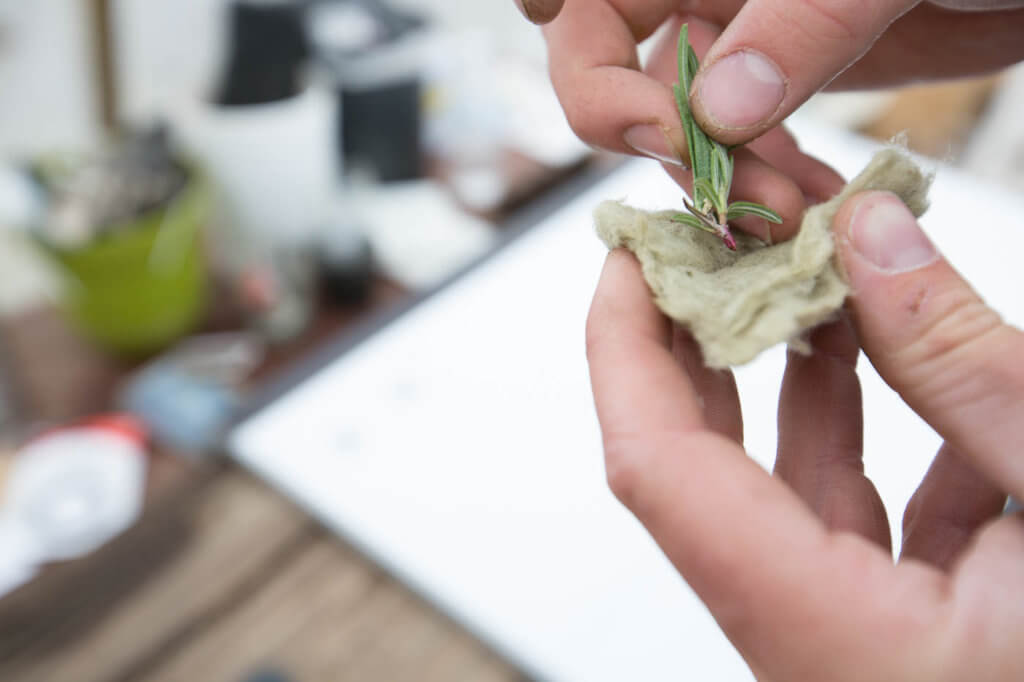Rosemarinus Officinalis: the every chef’s herb
Rosemary is a shrubby plant native to the Mediterranean areas. It’s drought tolerant, scrappy, and its fragrance and taste have been enchanting every kind of dish for centuries. A classic herb, rosemary has now been established in all corners of the globe. Nearly every chef, homemaker, and casual cook in the world has either cooked with the herb or consumed it; this makes demand fairly universal.
Rosmarinus officinalis belongs to the family Lamiaceae like many of our culinary herbs. Its shrublike structure and the ability to be shaped by pruning means that it can be compact—a good trait for high-density farming.
How much can you make selling rosemary?
Although most herbs grow slowly relative to greens, the pricing usually makes up for it. Non-local rosemary can be bought at a typical grocery store for $2.25–2.50 per ounce, but local and organic farmers list prices up to $3.90 per ounce. (If you’re wondering what pricing you could get on rosemary, do a bit of local market research and compare different herbs prices in the type of market you wish to target.)
Like its co-members of Lamiaceae, lavender and thyme, rosemary prefers dry feet. This means that growers should give roots a dry period between watering. For example, in our greenhouse, we have run oregano, thyme, and rosemary on a separate circuit and only run drippers through that block of towers twice a day for about 30 minutes each time.
Ideal conditions for rosemary in hydroponics
- EC: 1.0–1.6
- pH range: 5.5–6.0
- Temperature: 75–85º F
Rosemary is typically pest-free and can even deter many pests, but growers will occasionally see powdery mildew or mite infections. Botrytis and root rot can be an issue if growers over water—see above note on giving this crop dry periods between waterings! Growers raising rosemary in hydroponics should be especially careful about this, as it’s easy to over water.
Propagating rosemary: tradeoffs of cuttings vs seeds
Starting rosemary from seed can be a finicky process—the seeds need consistent moisture and germination rates tend to be around 30–50%. Growers are often better off propagating the plants from cuttings, although some argue that best flavors and aromatics come from seed-grown plants. Others report that germination can be increased by keeping germination chambers at 65–75ºF for the first week, followed by four weeks of 40º F temperatures. (If you try this, remember to transition transplants slowly to avoid plant shock, and factor the extra germination time into your costs.)

Seed-grown rosemary takes 2–3.5 weeks to germinate and an additional 3–4 weeks until they are ready to transplant.
To propagate rosemary cuttings, use a rooting powder on fresh cuttings and wrap the low end of the cutting in rock wool, peat, or another moisture-retaining material. The cuttings are ready to plant when roots are established and the sprig has grown past a few inches in height. This should happen in 2–3 weeks.
From transplant to the first harvest, rosemary takes 6–8 weeks. Growers should expect lower yields for the first few harvests while the plant is growing more mature. In time, mature plants can give over 7 ounces per ZipGrow Tower per week.
Harvesting and shelf life
Like many woody herbs, rosemary is a slow grower. The fragrance and potency of the herb make up for meager yields, however. While other multi-harvest crops like chard and kale last for 3–4 harvests, rosemary is a perennial; the plant’s natural lifetime can extend for decades. It can be harvested many times by pruning (similar to basil). Farmers should never take more than 30% of the plant at once, leaving 70% for the plant to photosynthesize and continue to grow. Like basil, rosemary grows best when pruned just above the apical shoots (the “V” in the stem).
Choose your crops!
To choose a crop set, you need several crops with overlapping pH, EC, and temperature preferences. You can get all of this information in the Recommended Crop List, a list of crops that excel in ZipGrow Towers.



How long can you expect rosemary to grow in a Zip Tower from seed (ie: when do you see the plant typically slow down production and need to replant?)
Hi Erin,
It will grow for a few months, but it will need to be cut and restarted or replanted after that.
Hi owner,
It’s an amazing article, and I am very interested in Rosemary Hydroponics.
I have a few questions about the methods of rosemary planting, especially in the first picture (It seems like a kind of vertical planting).
Could you share me some experiences about the amazing method?
I have typed my email address here, really appreciate your reply!
rosemary is perennial, that means it really wont slow down but will just continue to grow as long as moisture and nutrient needs are being met. Plant once, harvest forever is the motto with perennials.